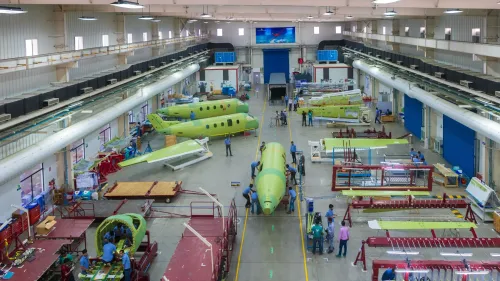Is India’s Smartwatch Market in a Consolidation Phase While Demand for Smart Glasses Rises?

Synopsis
Key Takeaways
- India's smartwatch market is in a consolidation phase.
- Smart Glasses shipments rose to 50,000 units in Q2 2025.
- Average selling prices of smartwatches increased by 5.1%.
- Smart Rings showed a 2.8% growth year-on-year.
- Wearable device market saw a 6.3% decline in the first half of 2025.
New Delhi, Aug 18 (NationPress) After experiencing remarkable growth in 2022 and 2023, India's smartwatch sector is now in a consolidation phase, primarily due to saturation in the entry-level segment, as reported on Monday.
Though there has been a decline in volumes, the average selling prices (ASPs) saw a rise of 5.1 percent year-on-year, increasing from $20.6 to $21.7 in the second quarter of 2025 (Q2 2025), according to the International Data Corporation (IDC).
Meanwhile, shipments of Smart Glasses soared to 50,000 units in Q2 2025, a significant increase from 4,000 units a year prior, driven by new releases from Meta and Lenskart. The average selling price (ASP) for this segment reached $134.0, indicating its premium positioning.
Smart Rings also saw a recovery after their first-ever decline in Q1 2025, achieving a modest 2.8 percent year-on-year growth with 75,000 units shipped in Q2 2025. Companies like Ultrahuman, Gabit, and Aabo continue to lead, holding a combined market share of 65 percent, according to the report.
Additionally, Smart Wristbands experienced a remarkable 118.5 percent year-on-year increase in shipments, totaling 83,000 units in the April-June period, with Samsung capturing 80.6 percent of the market share in this category in Q2.
In the earwear sector, the Truly Wireless Stereo (TWS) segment maintained its leading position with a 71.2 percent market share. The over-the-ear segment also saw strong growth, with shipments increasing by 97.4 percent year-on-year to 1.5 million units.
In the broader wearables market, boAt retained its leadership, boosting its market share from 26.7 percent to 28.0 percent year-on-year.
The first half of 2025 witnessed fewer smartwatch launches than expected.
“Looking ahead to the festive second half, brands are anticipated to shift towards mid-premium offerings, emphasizing advanced health sensors, NFC capabilities, AI-driven features for predictive health insights, and seamless integration with devices and ecosystems,” stated Anand Priya Singh, market analyst for Smart Wearable Devices at IDC India.
“Furthermore, the trend of white-label smartwatches (affordable replicas) is likely to regain traction, especially in the offline retail sector, spurred by aggressive bundle offers,” Singh added.
Emerging wearable categories are starting to connect with consumers, bolstered by innovative use cases and exciting new product launches. In the upcoming quarters, enhancements in the earwear segment are expected to feature AI-driven capabilities, including personalized voice assistance, environment-aware sound tuning, and next-generation noise cancellation, as highlighted in the report.
Overall, India's wearable device market experienced a 6.3 percent decline year-on-year in the first half of 2025 (1H25), totaling 51.6 million units. The market also faced a quarterly decline, dropping 9.4 percent year-on-year to 26.7 million units.










